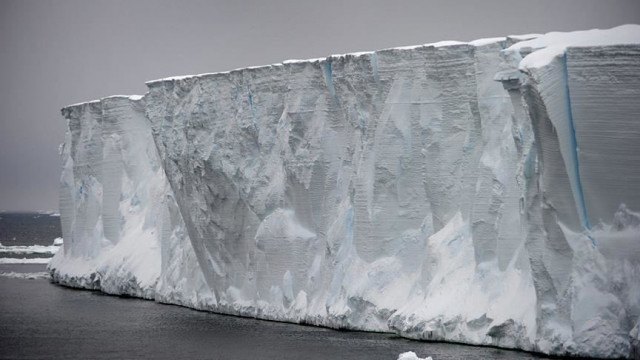Weather body checking record Arctic Circle temperature
Russia reportedly saw temperature of 38 C (100.4 F) on June 22, says World Meteorological Organization

Over the last four years (2016–2019), annual surface air temperatures in the Arctic (60°-85°N) have been the highest on record. PHOTO: AA
At a twice-weekly UN briefing in Geneva, Clare Nullis, World Meteorological Organization (WMO) spokesperson, said that the temperature was reported on June 20 in the Russian town of Verkhoyansk.
"It comes amid a prolonged Siberian heat wave and an increase in wildfire activity," said Nullis.
"Climate change isn't taking a break because of Covid-19. You know, temperatures are carrying on rising. We see continuing extreme weather events," she added.
Nullis said that that the far northern area of Siberia in Russia has experienced unusual heat during the current northern hemisphere spring.
"May was about 10 C above average in many parts of Siberia.
"It was this extraordinary heat which made the warmest May on record, certainly for the northern hemisphere, and we also think at a global level," said Nullis.
The Arctic is among the fastest-warming regions in the world, said the WMO.
Over the last four years (2016–2019), annual surface air temperatures in the Arctic (60°-85°N) have been the highest on record.
The WMO said that the volume of Arctic sea ice in September 2019 (after the melting season) has declined by more than 50% compared to the mean value for 1979–2019.
"The Arctic is heating at roughly twice the global average," said the WMO.
Siberia has witnessed exceptional heat in the past few weeks, with temperatures up to 10 C (18.5 F) above average in May, driving the warmest May on record for the entire northern hemisphere, and indeed the globe.
The WMO has asked experts from the Arctic and Antarctic Research Institute of the Russian Federal Service for Hydrometeorological and Environmental Monitoring (Roshydromet) for confirmation.
"We've asked them why. Apparently, this particular region of Eastern Siberia has very cold extremes in winter, but is also known for its extremes in summer," said Nullis.
It wasn't just May that was unusually mild in this region; winter and spring had repeated periods of higher-than-average surface air temperatures, particularly from January onwards.
The unusual warmth in winter and spring was associated with an exceptionally early breakup of ice in Siberia's rivers.
WMO cited Randall Cerveny, a professor of geographical sciences in the US state of Arizona, as saying, "This has been an unusually hot spring in Siberia.”
He added, "The coinciding lack of underlying snow in the region combined with overall global temperature increases, undoubtedly helped play a critical role in causing this extreme temperature observation."



















COMMENTS
Comments are moderated and generally will be posted if they are on-topic and not abusive.
For more information, please see our Comments FAQ